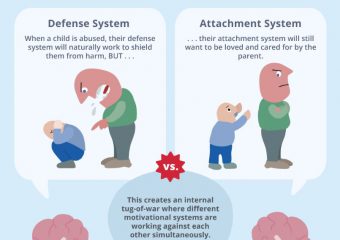According to Kathy Steele, MN, CS, dissociative disorders often present in subtle ways that may be tricky to identify. So in the video below, she walks us through some key signs that can help us differentiate dissociative identity disorder and structural dissociation from more mild forms of dissociation. She’ll also share several critical steps for […]
A Three-Step Approach to Treating Trauma-Related Dissociation, with Thema Bryant, PhD
Dissociation can be tricky to spot. On top of that, it can look awfully similar to freeze or shutdown. And to complicate things further, a patient might dissociate when they’re in either one of those trauma responses. But being able to detect when a client is dissociating is critical for providing effective treatment. So in […]
A Mistake Practitioners Might Make When Their Patient Is Stuck in the “Attach/Cry-for-Help” Response
We know fight, flight, and freeze . . . . . . but recently the experts have identified several more defense responses to trauma, including “attach/cry-for-help.” This response is potentially the least understood, and it can be challenging to work with. And according to Kathy Steele, MN, CS, there’s a common mistake that practitioners make […]
A Simple Strategy for Dissociative Clients Who Lose Time
When a client dissociates in session, there are many grounding techniques we can use to bring them back to the present. But what can help clients when they dissociate outside of your office – particularly when they report losing chunks of time? Below, Ruth Lanius, MD, PhD shares a simple yet effective strategy that helps […]
[Infographic] Working with Structural Dissociation
One challenge of working with trauma is when a patient’s dissociated “parts” are operating independently . . . . . . or worse, they’re at odds with each other. This can be very distressing for the patient (and lead to a dysregulated nervous system). But the Structural Dissociation Model developed by Kathy Steele, MN, CS, […]




